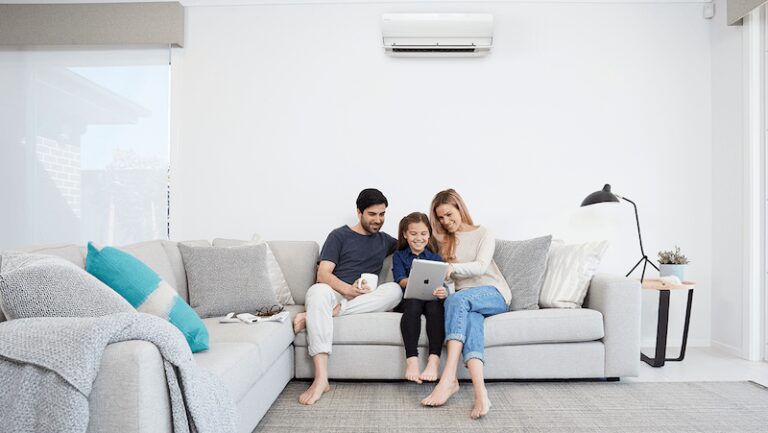When the temperature outside rises, the temperature within the house increases as well. Suffocatingly hot rooms are unpleasant and can lead to restless nights. A whole-house air conditioning system can be a good idea. However, you’ll need quicker, less expensive cooling methods to chill an area quickly.
Luckily, several cooling techniques take anything from a few minutes or longer to complete. You can quickly cool a place to more bearable conditions using any or all of these ways.
Effective Ways to Increase Air Conditioner Efficiency
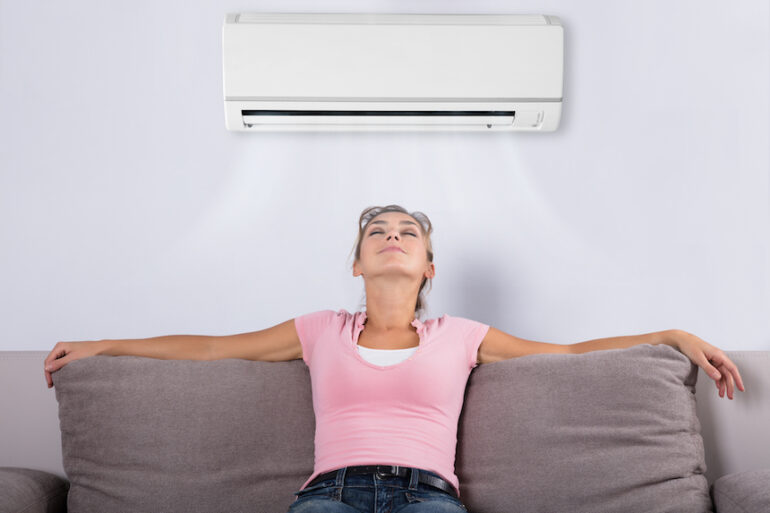
Improving the efficiency of your AC unit can lead to significant savings while also extending its life. Continue reading to find out what you can do.
1. Cover the Windows During the Day
Windows are always a trade-off between power efficiency and the yearning for natural light that we all have. The most incredible way to keep cool inside while it’s hot outside is to prevent the heat and direct sunshine.
A room with no openings or modest windows would be excellent in this case. However, no one likes to live in isolation. Installing thermal drapes over the windows will give you the same result. Close the curtains or shutters, at the very least.
2. Open the Windows at Night
After the sun sets, the temperature outside frequently drops below the indoors. If this occurs, discard the window coverings and open the windows as wide as possible. If you do own double-hung frames (windows with two sashes, one on top and one on bottom), you may not realize that the upper shutters of the most recent double-hung windows may open as well.
3. Installation of Intelligent Thermostat
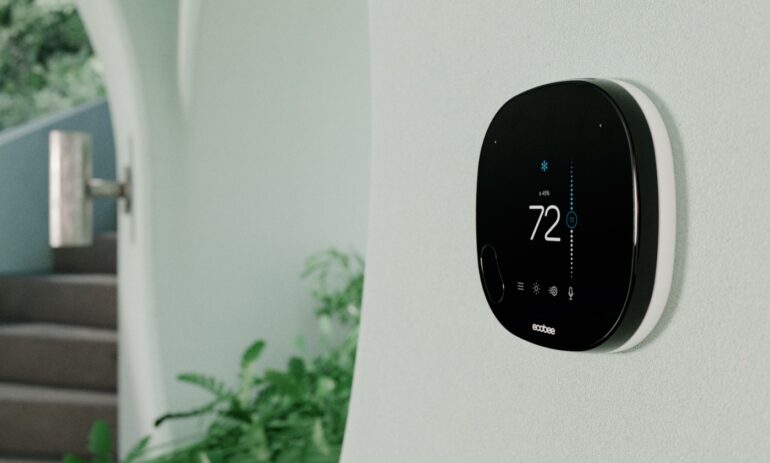
Upgrading to a smart thermostat is the simplest method to save money and improve the efficiency of your HVAC system. Sensors intelligently control the operation of your air conditioner. They achieve this in various ways, including employing motion sensors to detect your presence and adjusting the AC run time appropriately.
Smart thermostats also take into account the weather in the area. Your HVAC unit will be less taxed and more reliable due to regulating this activity. According to the US Department of Energy, an energy-efficient thermostat may save you up to 10% on air conditioning costs every year.
4. Check For Closed Air Dumpers:
Some homes have air dampers installed in their HVAC ducting. These dampers (also known as valves) regulate airflow in individual rooms or even whole floors. Unlike registers, which are viewable through ground or ceiling grilles, dampers are typically buried within ducting.
Look for visible knobs or hooks on the outside of ducts that can be rotated outside. You should be able to describe whether their valves are open, closed, or somewhere in between.
5. Shut Down Appliances
The majority of appliances produce some excess heat. Then there’s the other appliance group, which includes the washer and the oven, intended only to generate large amounts of heat.
Consider using an interior drying rack instead of the clothes dryer. A microwave is a significant improvement in terms of the ovens, but it still creates heat. Instead of cooking, remain cool by experimenting with the possibilities of delicious no-cook dinners.
6. Keep indoors open

While locking doors in the winter helps preserve heat in certain areas, doing that in the summer months is unhelpful. You prefer air to circulate freely throughout your home, even between rooms. Keep indoor doors open if you don’t want your home to become suffocating hotboxes.
7. Use your ceiling fans effectively
Ceiling fans may be used to cool a room and increase the entire performance of the AC unit you have in your house. Adjust the switch on the bottom of your ceiling fan so that the fan blades rotate counterclockwise throughout the summer months.
When the fan blades revolve counterclockwise, they force the air in the area downward, creating a cooling feeling on your skin even though the room’s temperature remains constant. Creating this effect allows you to adjust your thermostat a few degrees higher while feeling as comfy as if it were put lower.
8. Clean Around the Condenser Unit Outside
It will work best if your outside unit is nice and clean of debris. On the other hand, serving the condenser might be difficult, so be confident you know what you’re doing and how to accomplish it before you begin.
Professional cleaners should be entrusted with the most in-depth cleanings. They can guarantee that the proper procedures are followed to avoid significant harm.
9. Shade Your Outside Condenser
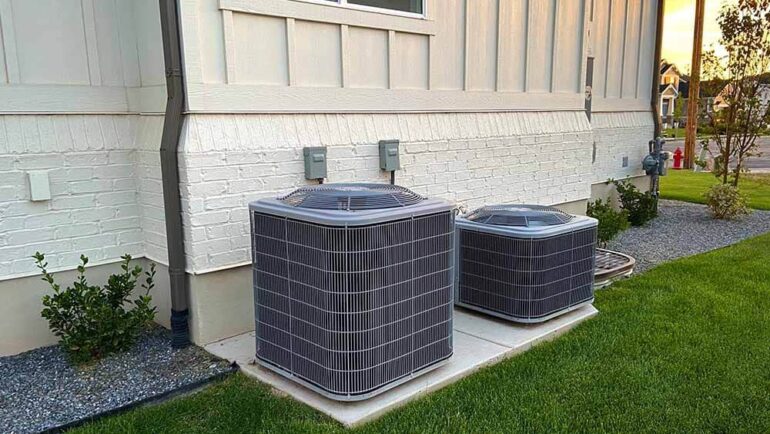
There’s no denying that the summer sun is intense. This heat may put a lot of strain on your outdoor condenser unit, forcing it to work extra hard merely to keep your house cool.
Put some cover over your outside system to help lessen the effort and wear and tear. The objective is to give shade rather than obstruct airflow.
10. Increase the Temperature on Your Thermostat
Raise the temperature on your thermostat by a couple of degrees. In most circumstances, a five- to eight-degree temperature change (up in the summer and down in the winter) can let you reduce both resources and costs.
You can control the temperature remotely from your smartphone or tablet if you buy a programmable thermostat. What’s more, you may make these changes independent of your location.
11. Change Your AC Filter
When your air conditioner gets optimum airflow, it implies it will run at maximum efficiency. On the other hand, a clogged filter might have a significant influence. Dirty filters will not only lower the purity of the air in your house, but they will also decrease airflow, rendering your air conditioner’s task even more hard.
It is a simple and inexpensive technique to avoid air conditioner efficiency issues. However, if you don’t handle this, you may end up having to spend money on costly repairs.
Signs Your System May Not Be Operating Efficiently
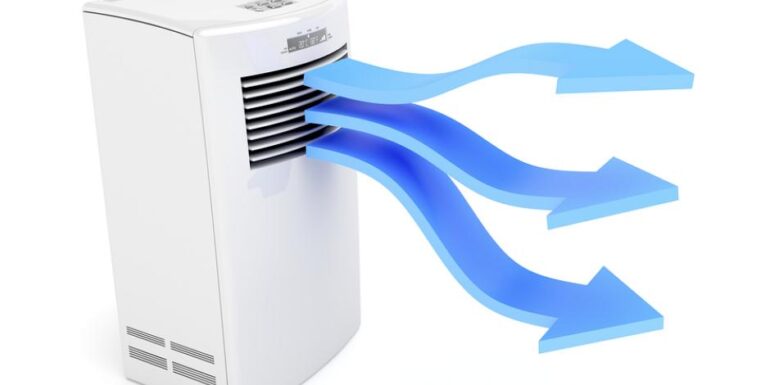
You might be wondering how to tell if your efficiency has decreased. The following are some indicators that your system is having trouble:
- Increase in costs
- Frequent cycling
- High humidity
- Water leaks
- Insufficient airflow
- Ice on the compressor
- Unusual sounds
You can check these faults at www.airconservicing.org.

